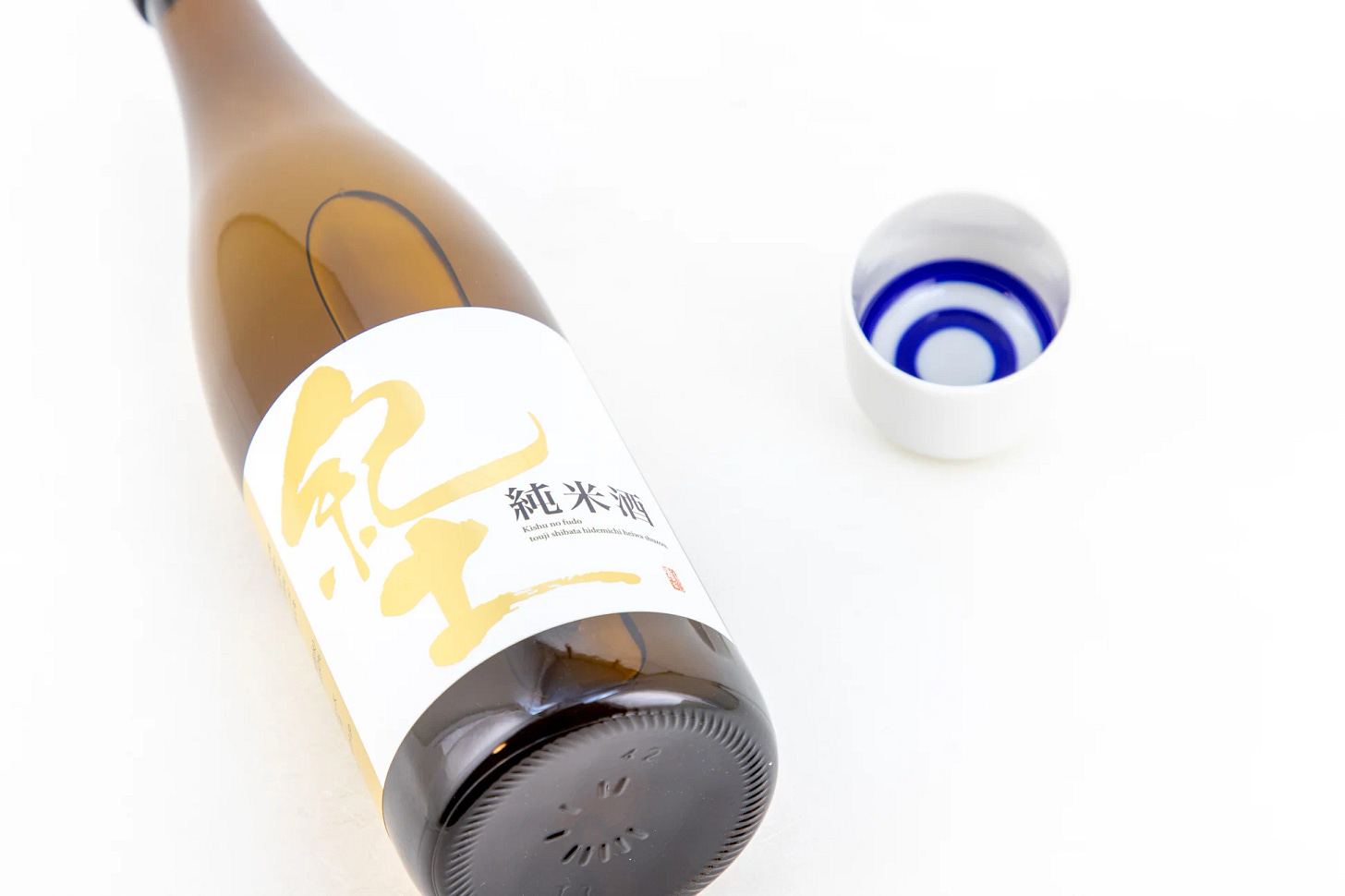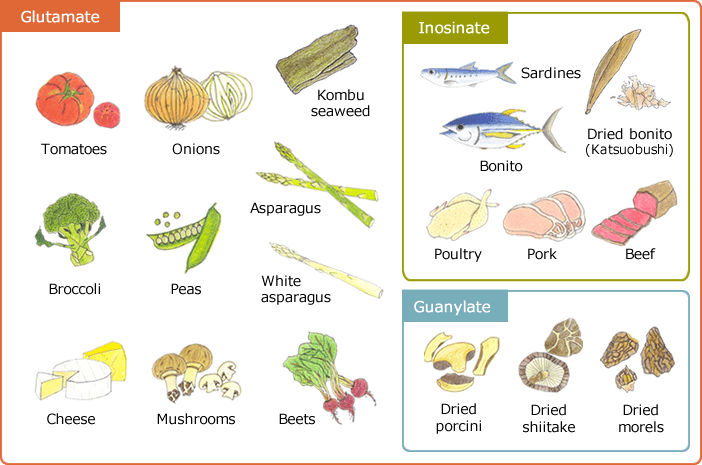Sake 101 #3: Understanding Umami in Sake
Exploring what makes sake rich, savory—and irresistibly complex.
Four years ago, when I was still living in Japan, I often chose sake over wine. I loved styles that were light, fruity, and as clear as mountain spring water—like drinking a gentle breeze. But after moving to Europe and spending years immersed in wine while studying for the WSET Diploma, something changed.
When I returned to sake—this time with a wine-tuned palate—I realized I had new preferences. I was no longer drawn to overtly fruity aromas. Instead, I found myself reaching for depth: earthiness, savoriness, spice, herbs. Texture mattered more. So did umami.
In short, I had started to love the kinds of sake that reminded me of what I loved in wine.
And I’m not the only one. From conversations at Prowein to sake menus at restaurants in Amsterdam, I keep hearing the same thing: what’s popular in Europe is often quite different from what’s loved in Japan.
Certainly, food culture plays a part—but I believe wine culture shapes our expectations too.
So today, let’s talk about one of the key reasons Junmai sake tastes so deep and satisfying: umami.
What Is Umami? (A Delicious Kind of Science)
Umami is the fifth taste—distinct from sweet, sour, salty, and bitter. It was first identified in Japan in the early 1900s and is now recognized as a fundamental taste sensation worldwide.
In simple terms, umami is the savory, mouth-filling richness found in foods like dashi broth, cured ham, aged cheese, and mushrooms. It’s what makes Parmesan feel “round,” soy sauce addictive, and broth comforting.
Scientifically, umami comes from naturally occurring amino acids and nucleotides—specifically:
Glutamate, found in fermented foods, tomatoes, seaweed, cheese
Inosinate, found in meats and seafood
Guanylate, found in mushrooms and dried shiitake
What makes umami especially powerful is synergy: when glutamate and inosinate or guanylate combine, the umami effect becomes exponentially stronger.
This is why dashi (kombu + bonito) or mushroom risotto feels so layered—umami is working in harmony.
Source: Umami Information Center
Why Junmai Sake Delivers More Umami
Sake, like wine, is a brewed alcoholic beverage. It’s made primarily from just four ingredients: steamed rice, water, koji mold, and yeast.
But unlike wine, which undergoes a single fermentation process (where sugar in the grapes is converted to alcohol), sake involves a more complex, dual process. It undergoes simultaneous saccharification and fermentation—meaning the starch in the rice is first converted into sugar (by the enzymes in koji), and at the same time, yeast transforms that sugar into alcohol.
Also unlike grapes, rice contains no juice, so water is added to create a fermentable mash.
So, what does this have to do with umami?
Umami in sake is also closely tied to amino acids, which primarily come from the rice. And here’s the key: the outer layers of the rice grain contain the highest concentrations of proteins, fats, lipids, which are broken down during fermentation into amino acids—what we taste as umami.
In sake brewing, the more you polish the rice, the more you remove those outer layers—and with them, much of the umami potential. On the other hand, as the rice grain becomes more refined (i.e., more highly polished), the resulting sake tends to be lighter in body, cleaner in flavor, and lower in umami—though often with a more refined and aromatic profile.
This is where style comes into play:
Ginjo-style sake (including Ginjo, Daiginjo, Junmai Ginjo, and Junmai Daiginjo) is typically made with highly polished rice—60% or less remaining. These sakes are often brewed at low temperatures and fermented slowly to preserve delicate, fruity, and floral aromas (like melon, banana, or pear). They tend to be refined, fragrant, and elegant, with a lighter body and subtle umami.
Non-Ginjo sake, including many Junmai and Honjozo styles, is brewed with less-polished rice—70% or more remaining. These sakes retain more of the rice’s outer layers, resulting in higher amino acid content, richer textures, and a deeper, more savory umami profile. Aromas may lean toward cereal grains, cooked rice, nuts, or soft dairy notes, and the palate can feel broader and more mouth-filling.
There’s another important concept to understand:
Junmai (pure rice) vs. non-Junmai (which includes a small amount of added distilled alcohol). Junmai types (Junmai, Junmai Ginjo, Junmai Daiginjo) contain no added alcohol, meaning the flavor is entirely derived from rice fermentation. This often results in sake that is rounder in texture, more earthy or savory, and sometimes bolder in body.
So while “Junmai” refers to whether the sake is made purely from rice (no added alcohol), and “Ginjo” refers to polishing and brewing style, they can be combined (Junmai Ginjo) or stand alone.
When it comes to umami, the biggest drivers are:
Polishing ratio (how much of the outer layer is retained),
Brewing style (aroma-driven vs. umami-driven), and
Junmai or not (purely rice-based vs. alcohol-added).
If you’re curious about how polishing ratio affects sake flavor, I cover it in more detail here: 🔗 Sake 101: The Role of Polishing Ratio
While non-Ginjo Junmai styles can sometimes be bold or rustic, skilled producers can craft them into elegant and refined expressions. If you’ve grown away from wines that rely heavily on fruity, low-temperature fermentation styles, Junmai sake might feel like home.
Featured Sake: KID Junmai
I’d love to introduce an exquisite sake in the Junmai category, which I explained above.
Brewery Information:
Heiwa Shuzo, established in 1928, is nestled in a valley near Kainan City in Wakayama Prefecture. Surrounded by mountains and blessed with high rainfall, Heiwa Shuzo benefits from an abundant supply of soft spring water known as Koyasan Nansui, ideal for sake brewing.
The "KID" brand name combines “Kishu” (the historical name for Wakayama) and “Fudo” (meaning environment), reflecting the brewery’s commitment to encapsulating the essence of its locale. Notably, Heiwa Shuzo earned the title of Brewer of the Year at the International Wine Challenge in consecutive years—2019 and 2020—an unprecedented feat among sake breweries. In 2024, Heiwa Shuzo was ranked 6th in the World Sakagura Ranking.
Consistent Recognition:
KID Junmai has earned acclaim, consistently ranking among the top 10 on various sake rating platforms—highlighting its strong reputation among both critics and consumers.
Sake Information:
Sake: KID Junmaishu
Rice: Yamada Nishiki, Gohyakumangoku, and others
Polishing Ratio: 60%
ABV: 15%
Yeast: Society No. 7
Nihonshu-do: +3.0
Acidity: 1.5
My Tasting Note (WSET Level 3 Perspective):
Appearance: Clear, pale lemon
Nose: Clean, with medium intensity aromas of pear, lychee, plum, rice flour, steamed rice, cereal grains, cotton candy, and subtle lactic notes reminiscent of fresh cream. (It’s not technically a Ginjo-style, but its aromas are reminiscent of one.)
Palate: Off-dry with medium(+) acidity, medium alcohol, and a medium(+) body. The flavors reflect the nose—steamed rice, cereal grains, and a delicate sweetness reminiscent of cotton candy. Umami is medium(+), contributing to a creamy, velvety texture. The finish is medium(+), leaving a satisfying, savory aftertaste.
Quality level: Outstanding
Enjoyment Recommendations:
KID Junmai is remarkably versatile in terms of serving temperature. While refreshing when chilled, warming it brings out its umami character and reveals deeper, more complex flavors. This adaptability makes it a fantastic pairing for a wide range of dishes, especially those rich in umami.
Personal Preference & Invitation to Explore:
For wine enthusiasts who appreciate beverages with depth, texture, and a harmonious balance of flavor, Junmai sake offers a compelling experience. Its nuanced umami profile and substantial mouthfeel present an alternative to wines that can lean overly fruity due to low-temperature fermentation. While some Junmai sakes can be bold and robust, skilled producers like Heiwa Shuzo create expressions that are both refined and approachable.
KID Junmai is increasingly available in international markets—including the Netherlands, Germany, the USA, and the UK. I encourage you to seek it out and begin your own flavorful journey, one that bridges the traditions of sake with the refined sensibilities of wine appreciation.
Join the Conversation:
Have you explored Junmai sake before? What are your impressions of its umami-driven character compared to other beverages? Share your thoughts and experiences in the comments below—I’d love to hear from you!
Thanks for reading Pairing the World: Wine, Sake, and More!
Every Tuesday, I dive into Sake 101, and every Friday, I explore unexpected (but delightful!) food and wine—or sake—pairings.
Subscribe for free to get the latest posts and help support my work! 🍷🍶✨
時間短縮に日本語でどうぞ
なぜ純米酒はこんなにも深い味わいなのか:うま味のストーリー
日本酒を複雑で魅力的な飲み物にする理由を、科学と味覚の視点から探ります。
4年前、日本に住んでいた頃は、ワインよりも日本酒を選ぶことが多くありました。当時好きだったのは、フルーティーで軽やか、まるで山の湧き水のように澄んだ日本酒。まさに、そよ風を飲むような感覚です。
けれどもヨーロッパに移り住み、WSET Diplomaの勉強で日々ワインに向き合う生活を送るうちに、自分の味覚に変化が起こりました。
久しぶりに日本酒を飲んでみると、「あれ?好みが変わってる」と気づきました。以前好きだった華やかな香りよりも、土っぽさやスパイス、ハーブのような奥行きを感じるものを求めるようになっていたのです。食感や、うま味があるかどうかも、より大事になっていました。
そう。ワインで「おいしい」と思うポイントに近づいていたのです。
そしてこれは、私だけではありません。Prowein(国際ワイン展示会)での会話や、アムステルダムの日本酒メニューを見ていても、ヨーロッパで人気のあるスタイルと、日本国内で好まれる日本酒の傾向はけっこう違うと感じます。
もちろん食文化の違いもありますが、ワイン文化の影響も無視できないのでは?と考えています。
ということで今回は、なぜ純米酒がこんなにも「深くて、満足感がある味わい」なのか。そのカギを握る「うま味」についてお話しします。
うま味って何?(おいしさの科学)
うま味は、甘味・酸味・塩味・苦味に続く「第5の味覚」です。1900年代初頭に日本で発見され、今では世界中で基本の味覚として認められています。
わかりやすく言えば、「うま味」は、口の中にじゅわっと広がるような、深くて豊かなコクのこと。出汁、熟成チーズ、干ししいたけ、熟成ハムなどに感じられる、あの“やみつきになるおいしさ”です。
科学的には、うま味はアミノ酸や核酸由来の成分で、主に以下の3つです:
グルタミン酸(発酵食品、トマト、昆布、チーズなど)
イノシン酸(肉や魚介類)
グアニル酸(きのこ類や干ししいたけ)
特に注目すべきは、「相乗効果」。これらが組み合わさることで、単体よりもうま味の感じ方が何倍にも高まるのです。たとえば昆布×かつおの「出汁」や、マッシュルームのリゾットが奥深く感じられるのはこのためです。
なぜ純米酒はうま味が豊富なのか?
日本酒は、ワインと同じく「醸造酒」に分類されます。主な原料は、蒸した米・水・麹・酵母の4つだけです。
しかし、ワインが「糖→アルコール」の1段階発酵であるのに対し、日本酒は「デンプン→糖→アルコール」という2つの工程が同時に進む並行複発酵という特殊な造り方をしています。
さらに、米には果汁がないので、水を加えて発酵液を作る必要もあります。
ここで、うま味の話に戻ります。
日本酒のうま味は、米由来のアミノ酸と密接に関係しています。中でも重要なのが、米の外側の層(ぬか層)に多く含まれるたんぱく質や脂質。これらが発酵中に分解されて、アミノ酸=うま味成分に変わるのです。
つまり、米を磨けば磨くほど、外側のうま味成分も削られてしまうということ。
これが、磨き度合いによる味わいの差につながります。
スタイルの違い:吟醸系と非吟醸系
**吟醸系(吟醸、大吟醸、純米吟醸、純米大吟醸)**は、60%以下まで精米された米で造られます。低温でゆっくり発酵させ、メロンやバナナ、洋梨のような香りを引き出します。軽やかで華やか、そして繊細。うま味はやや控えめです。
**非吟醸系(純米や本醸造など)**は、70%以上の精米歩合の米を使うことが多く、米の外側の層を多く残しています。そのため、うま味成分であるアミノ酸が豊富で、コクのある味わいに。香りは穀物や蒸し米、ナッツや柔らかい乳製品(ヨーグルトやクリーム)を思わせるものが多く、口当たりはふくよかで包み込むようです。
さらに重要なのが、「純米酒 vs アル添酒」という視点。
純米酒(純米、純米吟醸、純米大吟醸)は、醸造アルコールを加えないことで、米だけの風味をダイレクトに楽しめます。まろやかで、旨みがあり、土っぽさや重厚感も感じられることがあります。
つまり、「純米」は原料、「吟醸」は精米と造り方のスタイルを表しており、両者は独立しつつも組み合わせ可能(例:純米吟醸)。
うま味を左右するポイントは、大きくこの3つ:
精米歩合(どれだけ外側を残すか)
造り方(香り重視か、うま味重視か)
純米かどうか(米100%か、アル添か)
もっと詳しく知りたい方は、こちらの記事もどうぞ:🔗 Sake 101: 精米歩合の役割
なお、非吟醸タイプの純米酒は、素朴で重ためな印象を持たれることもありますが、技術力のある酒蔵が造ると、まるでワインのように洗練された1本に仕上がります。
特に、フルーティーすぎるワインや低温発酵の甘味に飽きてきたワインラバーには、「この感じ、好きかも」と感じてもらえるはずです。
今週のおすすめ:KID 純米酒(平和酒造/和歌山県)
今回紹介した「うま味豊富な純米酒」の代表として、KID純米酒をおすすめします。
酒蔵情報:
和歌山県海南市の山あいにある平和酒造。1928年創業で、年間を通じて雨が多く、名水「高野山南水」に恵まれた土地で酒造りを行っています。
「KID」というブランド名は、「紀州(Kishu)」と「風土(Fudo)」を組み合わせた造語で、この土地の個性を表現したいという思いが込められています。
平和酒造は、IWC(インターナショナル・ワイン・チャレンジ)で2年連続(2019・2020年)「SAKE BREWER OF THE YEAR」に選ばれた実績もある実力蔵。2024年の世界酒蔵ランキングでは第6位にランクインしました。
スペック:
使用米:山田錦、五百万石 他
精米歩合:60%
アルコール度数:15%
酵母:協会7号
日本酒度:+3.0
酸度:1.5
テイスティングコメント(WSETレベル3基準):
外観:クリアで淡いレモン色
香り:中程度の強さ。梨、ライチ、梅、米粉、蒸し米、穀物、綿菓子、そして生クリームのような柔らかな乳製品の香りが複雑に重なります。吟醸酒ではないものの、香りは吟醸酒に近い印象も。
味わい:やや辛口で中程度以上の酸味、中程度のアルコール、ボディは中程度以上。香りの印象がそのまま広がり、蒸し米や穀物系のふくよかな旨味に、綿菓子のような柔らかい甘みが重なります。うま味は中程度以上で、クリーミーかつ滑らかな口当たり。後味は長めで、心地よい余韻が続きます。
評価:Outstanding(傑出)
飲み方のおすすめ:
冷やして爽やかに飲むのも美味しいですが、ぬる燗にするとさらに旨味がふくらみ、複雑な香味が引き立ちます。特にうま味の強い料理とは相性抜群です。
ワイン好きにこそ試してほしい純米酒
テクスチャや複雑さ、バランスのとれた味わいを重視するワインラバーにとって、純米酒はまさに「探していたあの1本」かもしれません。
最近では、オランダやドイツ、アメリカ、イギリスなどでもKID純米酒が手に入るようになってきました。ぜひ見つけたら試してみてください。ワインと日本酒の世界がつながる、新しい味覚の旅が始まるかもしれません。
あなたの声を聞かせてください:
純米酒、試したことありますか?その「うま味の奥深さ」、ワインや他の飲み物と比べてどう感じましたか?
コメントで感想をぜひシェアしてください!皆さんの経験やストーリーも、今後の「Sake 101」シリーズで紹介していきたいと思っています。
📍この投稿は、毎週火曜日にお届けしている「Sake 101」シリーズの一部です。金曜日には、ワインや日本酒とアジア料理のペアリングを紹介しています。
無料購読すると、最新記事がメールで届きます。応援していただけたら嬉しいです🍶🍷
👉 面白かった!という方は、ぜひフォローして、次回の投稿もお楽しみに。
また、日本ワイン、日本酒に関し(オランダから)プロモーションや通訳等のお手伝いをしていきたいと思っています。何かお手伝いできることがありましたらこちらまでご連絡いただければ幸いです。





